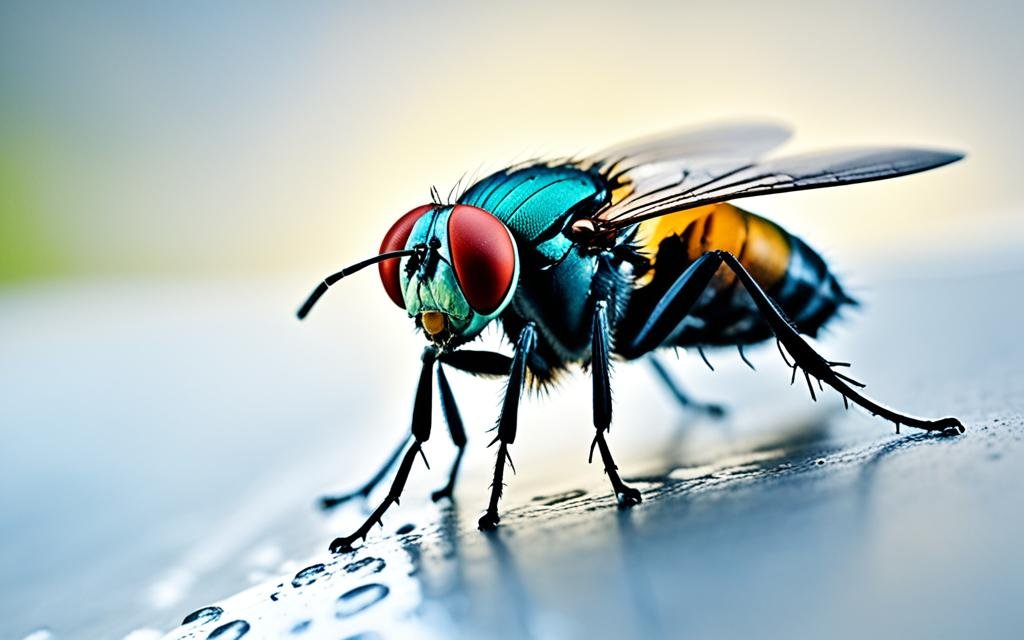Flies can be a huge nuisance in any home. They seem to appear out of nowhere, buzzing around your food and landing on every surface they can find. More than just a simple annoyance, flies can carry diseases and contaminate food, making it important to control their presence in your living space. Fortunately, there are various methods to reduce flies in and around your home. Here, we’ll walk through several practical tips and strategies that anyone can use to keep flies at bay.
Why Do Flies Invade Homes?
To effectively prevent flies from entering your home, it helps to understand why they are attracted to homes in the first place. Flies are generally drawn to areas where they can find food, warmth, and a place to lay their eggs. Here are a few reasons why flies may be invading your home:
- Food Sources: Flies are attracted to food scraps, leftovers, and even pet food. They can sense these food sources from a distance, which makes it essential to keep food sealed and stored properly.
- Garbage: Flies are naturally drawn to waste. If your trash can isn’t sealed properly or is overflowing, it can be a magnet for flies.
- Moisture and Organic Matter: Wet spots and organic waste, such as compost or spoiled fruit, are ideal environments for flies to lay their eggs. Areas in your home where you keep plants, wet rags, or any decomposing organic material can also attract flies.
Simple Steps for Keeping Flies Out
Let’s look at some straightforward steps you can take to discourage flies from entering your home:
- Seal Up Your Home: Ensure that your windows, doors, and vents are well-sealed. Small cracks and openings in screens or walls provide easy access points for flies to enter.
- Dispose of Trash Properly: Keep your trash cans covered and empty them frequently, especially in warm weather. Flies are especially attracted to food waste, so consider using bins with tight-sealing lids. For outdoor trash cans, wash them occasionally to get rid of any lingering odors.
- Use Natural Deterrents: Essential oils like lavender, eucalyptus, and peppermint can help repel flies. Simply mix a few drops of these oils with water and spray around entry points. Not only will your home smell great, but it may discourage flies from entering.
- Keep Food Sealed: Never leave food out in the open for extended periods. Store leftovers in the fridge, keep fruits in closed containers, and avoid leaving dirty dishes in the sink. This helps reduce the smells that attract flies.
- Clean Drains Regularly: Flies, especially drain flies, tend to breed in moist areas like kitchen or bathroom drains. To prevent this, pour boiling water down your drains weekly, and use a drain cleaner to remove any buildup of organic material.
Understanding Different Types of Flies
Not all flies are the same. Here’s a quick overview of some common types of flies and why they may be attracted to your home:
- House Flies: House flies are the most common type you’ll see indoors. They’re attracted to food, garbage, and pet waste.
- Fruit Flies: As their name suggests, fruit flies are attracted to ripened fruits and vegetables. They’re particularly common in kitchens where produce may be left out.
- Drain Flies: These flies are small and prefer to lay their eggs in the damp organic material found in drains. They are often seen in bathrooms and kitchens.
Each type of fly may require slightly different control methods, but general prevention steps remain effective for all.
Homemade Fly Traps and Solutions
Making your own fly traps can be a simple and cost-effective way to manage the problem. Here are a few DIY solutions you can try:
- Vinegar and Dish Soap Trap: This is one of the easiest fly traps to make at home. Fill a small bowl with apple cider vinegar and add a few drops of dish soap. The vinegar attracts the flies, and the dish soap traps them when they try to land.
- Jar Trap with Overripe Fruit: Place a piece of overripe fruit in a jar and cover the opening with plastic wrap, securing it with a rubber band. Poke small holes in the plastic wrap. Flies will be able to enter the jar, but they won’t be able to find their way back out.
- Sticky Tape or Fly Paper: You can buy sticky fly paper at most stores, which attracts flies and traps them. Hang these strips in problem areas, such as near windows or doors, where flies are more likely to enter.
Using Plants to Repel Flies
Certain plants have strong scents that flies tend to avoid. If you’re looking for a natural way to deter flies, consider placing some of these plants around your home:
- Basil: This herb is not only great for cooking, but it also has a scent that flies dislike. Place potted basil plants on your kitchen windowsill or other entry points.
- Lavender: Known for its soothing scent, lavender is a natural fly repellent. Consider planting it around entryways or using dried lavender indoors.
- Mint: Another kitchen herb with a strong smell, mint can be effective in repelling flies. Plant mint outside or use dried mint indoors as a natural deterrent.
Using Light to Manage Flies
Flies are generally attracted to light, especially at night. To minimize flies coming into your home through open doors or windows at night, avoid having lights on near entrances. Instead, try to keep your outdoor lights away from doors and windows. This simple step can reduce the number of flies attracted to your home.
Properly Maintain Your Yard
If you have a yard, managing it can play a key role in controlling flies. Here are some ways to keep flies away from the outdoor areas around your home:
- Clean Up Animal Waste: If you have pets, be sure to clean up their waste from your yard regularly. Flies are attracted to animal waste as a breeding ground.
- Compost Wisely: If you compost, make sure to keep your compost pile as far from your home as possible. Always cover compost bins to reduce odors that attract flies.
- Reduce Standing Water: Flies, particularly some species like horseflies, are attracted to water. Avoid having standing water in your yard by emptying flower pot saucers, cleaning out birdbaths, and ensuring your yard drains properly.
- Trim Vegetation: Overgrown plants and grass can serve as hiding spots for flies and other pests. Keeping your plants trimmed and tidy can reduce the likelihood of flies lingering around your home.
Indoor Cleaning Routine for Fly Prevention
Regular cleaning can make a big difference in fly control. Pay special attention to high-traffic areas, such as the kitchen and bathroom, where flies are most likely to find food and water sources. Here are some cleaning tips:
- Wipe Down Surfaces: Regularly wipe down counters, stovetops, and other surfaces where food particles may be present. Even small crumbs can attract flies.
- Take Out the Trash Frequently: Don’t let trash build up indoors, especially if it contains food waste. Taking it out daily can significantly reduce the smells that attract flies.
- Vacuum Often: Vacuuming your floors and carpets can help remove food particles and other debris that flies might be attracted to.
Final Words on Fly Control
Getting rid of flies in your home can feel like a never-ending task, but with a little consistency, it is possible to keep them under control. The combination of natural repellents, regular cleaning, and minor adjustments to your daily routine can make a big difference. By understanding why flies are drawn to certain areas and taking proactive steps, you’ll be able to enjoy a fly-free environment more easily.
Remember, the best way to deal with flies is to fly control preventively before they become a problem. When you stay on top of basic cleanliness and make use of natural repellents and homemade traps, you can enjoy a more comfortable, clean, and fly-free living space.



